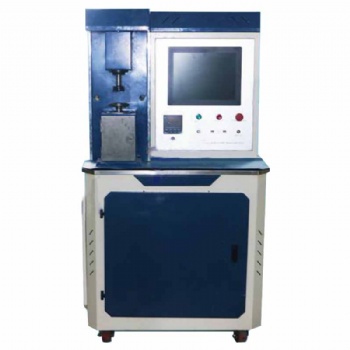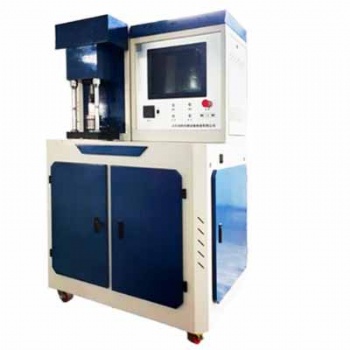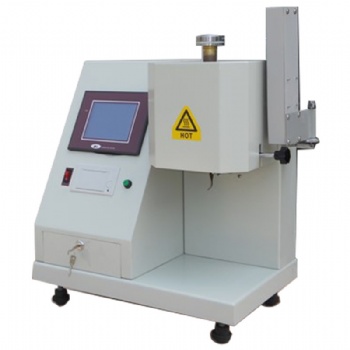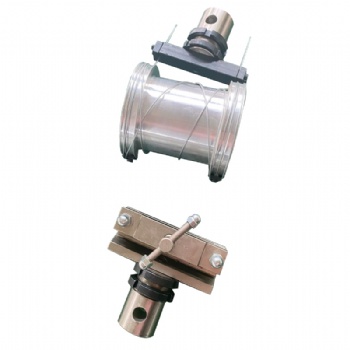News
Exploring the Vamp Flex Tester: Essential Insights into Flexural Testing
Exploring the Vamp Flex Tester: Essential Insights into Flexural Testing
Introduction
In the world of materials testing, ensuring that products meet the required standards for flexibility, strength, and durability is crucial. One important instrument for this purpose is the Vamp Flex Tester. This device is specialized for flexural testing, which measures how materials bend under load. Flexural testing is vital for assessing the performance and reliability of materials used in a variety of applications, from construction and manufacturing to aerospace and automotive industries. In this blog post, we'll dive deep into what a Vamp Flex Tester is, how it works, its applications, and the benefits it offers.
What is a Vamp Flex Tester?
The Vamp Flex Tester is a sophisticated piece of equipment designed to measure the flexural properties of materials. Flexural testing, also known as bending or modulus of rupture testing, evaluates how a material responds to forces applied perpendicular to its length. This type of testing helps determine the material's flexibility, stiffness, and strength, providing valuable data for quality control and research.
The Vamp Flex Tester is engineered to handle a range of materials, including metals, plastics, composites, and ceramics. It is widely used in industries where materials need to withstand bending forces without failing or deforming excessively.
How the Vamp Flex Tester Works
The Vamp Flex Tester operates on the principle of applying a controlled load to a material sample and measuring its response. Here’s a step-by-step overview of the testing process:
Sample Preparation: The material to be tested is prepared according to standard specifications. Typically, samples are cut into standardized shapes, such as beams or bars, with known dimensions.
Setup: The prepared sample is placed on the tester's support platform. The Vamp Flex Tester is equipped with two supports where the sample rests, and a loading mechanism that applies force to the center of the sample.
Application of Load: The tester applies a load to the sample in a controlled manner. This load is usually applied through a loading point or by using a flexural jig. The tester can apply either a constant load or a progressively increasing load until the sample bends or breaks.
Measurement: As the load is applied, the Vamp Flex Tester measures the amount of deflection or bending of the sample. The deflection data, along with the applied load, are recorded by the tester’s measurement system.
Data Analysis: The recorded data is analyzed to determine the material's flexural properties. Key parameters include flexural strength (the maximum stress the material can withstand before failing), modulus of elasticity (a measure of stiffness), and ductility (the extent to which the material deforms before failure).
Reporting: The results are compiled into a report, which provides insights into the material's performance. This report can be used for quality assurance, product development, and compliance with industry standards.
Types of Flexural Testing
The Vamp Flex Tester can perform various types of flexural testing, each suited to different materials and applications:
Three-Point Bending Test: In this test, the sample is supported at two points while a load is applied at the center. It is commonly used for materials like metals and plastics.
Four-Point Bending Test: This test involves supporting the sample at four points, with loads applied between the outer and inner supports. It provides more uniform stress distribution and is useful for evaluating materials with varying properties.
Cantilever Bending Test: In this test, one end of the sample is fixed while the load is applied to the free end. It is particularly useful for testing beams and other long, slender samples.
Flexural Fatigue Test: This test measures how a material performs under repeated loading and unloading cycles. It is important for evaluating the durability of materials subjected to cyclic stresses.
Applications of the Vamp Flex Tester
The Vamp Flex Tester is employed across a range of industries and applications where understanding the flexural properties of materials is crucial:
Construction and Civil Engineering: In the construction industry, the Vamp Flex Tester helps assess the strength and flexibility of building materials like concrete, steel, and composite materials. This ensures that materials used in structures can withstand bending forces without failure.
Automotive Industry: For automotive components, flexural testing is used to evaluate materials used in vehicle parts, such as bumpers, chassis, and suspension components. Ensuring these materials can handle the stresses encountered during operation is critical for safety and performance.
Aerospace: In aerospace applications, the tester is used to assess the performance of materials used in aircraft and spacecraft. The ability to withstand bending forces is crucial for ensuring the structural integrity of aerospace components under extreme conditions.
Manufacturing: In the manufacturing industry, the Vamp Flex Tester helps in the development and quality control of products made from various materials, including plastics, metals, and composites. It ensures that these products meet performance and safety standards.
Research and Development: For researchers and material scientists, the Vamp Flex Tester provides valuable data for developing new materials and improving existing ones. It helps in understanding how materials behave under bending forces, leading to innovations in material design and application.
Benefits of Using a Vamp Flex Tester
Accuracy and Precision: The Vamp Flex Tester provides highly accurate and precise measurements of flexural properties. This ensures reliable data for quality control and product development.
Versatility: With the ability to test a wide range of materials and perform different types of flexural tests, the Vamp Flex Tester is a versatile tool for various applications and industries.
Enhanced Material Understanding: By providing detailed insights into a material's flexural behavior, the tester helps engineers and scientists understand how materials will perform in real-world applications.
Quality Assurance: Regular testing with the Vamp Flex Tester helps maintain high-quality standards for products and materials. It ensures that materials meet the required specifications and performance criteria.
Improved Safety: In industries like construction and automotive, understanding the flexural properties of materials is crucial for ensuring safety and preventing failures. The tester helps in identifying potential issues before they become critical.
Challenges and Considerations
While the Vamp Flex Tester offers numerous benefits, there are some challenges and considerations to keep in mind:
Sample Preparation: Proper sample preparation is essential for accurate results. Variations in sample dimensions or surface conditions can affect the test outcomes.
Calibration: Regular calibration of the tester is necessary to ensure accuracy. Over time, the tester's components may wear or drift, affecting measurement precision.
Environmental Factors: Flexural testing can be influenced by environmental factors such as temperature and humidity. It is important to conduct tests under controlled conditions to obtain reliable data.
Maintenance: Routine maintenance and inspection are required to keep the Vamp Flex Tester in optimal working condition. Regular checks can help prevent issues and extend the lifespan of the equipment.
Future Trends and Innovations
As technology continues to advance, the capabilities of flexural testing equipment like the Vamp Flex Tester are evolving. Some emerging trends and innovations include:
Integration with Advanced Software: Modern testers are increasingly integrated with advanced software for data analysis and reporting. This allows for more detailed and comprehensive analysis of test results.
Enhanced Automation: Automation in flexural testing is improving efficiency and reducing the potential for human error. Automated systems can handle sample loading, testing, and data analysis with minimal intervention.
Improved Data Acquisition: Advances in sensor technology and data acquisition methods are leading to more precise and reliable measurements. This enhances the accuracy of flexural testing results.
Smart Testing Systems: Smart testing systems with built-in diagnostics and real-time monitoring capabilities are becoming more common. These systems provide greater control and insight into the testing process.
Conclusion
The Vamp Flex Tester is a critical tool for assessing the flexural properties of materials, providing valuable insights into their strength, flexibility, and durability. Its applications span various industries, including construction, automotive, aerospace, and manufacturing, where understanding material behavior under bending forces is essential. By offering accurate, versatile, and reliable testing, the Vamp Flex Tester plays a vital role in quality control, product development, and research. As technology continues to advance, the capabilities of flexural testing equipment will evolve, further enhancing its role in ensuring material performance and safety.
Categories
Contact Us
- +86-18615632092
- wtbequipment@hotmail.com
- sophie-tester
- +86-18615632092




 售前客服
售前客服